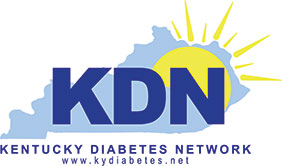The Kentucky Diabetes Network created a campaign titled “Know More in ‘24”. This campaign aimed to increase awareness and utilization of diabetes prevention and health promotion programs and services as well as broaden KDN’s reach to establish new health and community partnerships across the state. Through this campaign we reached and supported Kentuckians who are at risk for developing type 2 diabetes as well as engage likeminded organizations such as diabetes care and education specialists, physicians, dietitians, public health professionals, youth health education organizations, community health workers, and other community-based health providers. The content and activities developed through this engagement were targeted toward adults with emphasis on young adults, teenagers and children with a focus of prevention from a young person’s perspective and was disseminated through a targeted information campaign.
Here’s why:
Type 2 diabetes is a chronic condition that can affect all areas of the body, including the heart, brain, eyes, kidneys, and extremities. In Kentucky, there are nearly 486,196 residents or 13.8% of the population diagnosed with diabetes, the majority of which are diagnosed with type 2 diabetes. An additional 12% of Kentuckians have a diagnosis of prediabetes, a condition in which the blood glucose is higher than considered healthy, but not yet high enough to be diagnosed as diabetes. The physical and emotional burden of diabetes is great, but Kentuckians also suffer the financial burden of the disease. In 2017, it is estimated that 5.16 billion dollars was spent in total medical expenditures, lost work and wages related to diabetes in our state (1).
A constellation of lifestyle behaviors contribute to the development of obesity, which is a major risk factor for diabetes. Approximately one-third of American youth are overweight (2), which can lead to obesity and can cause increased risk for type 2 diabetes. Excessive screen time, poor quality of diet and sedentary lifestyles are just some of the habits that can lead to excess body weight. Prior to the public health emergency due to COVID-19, the number of American youth developing type 2 diabetes was increasing. As lifestyles changed during and after the public health emergency, the numbers again have increased. (3) Seven states had youth obesity rates significantly higher than the national rate of 17.0% including Kentucky (24.0%) (4). The National Clinical Care Commission Report as well as Healthy People 2030 both agree that multiple strategies and interventions are needed to prevent type 2 diabetes in youth. (5,6)
Here’s what we planned:
The campaign has four components:
Outreach to Partner Organizations-
Organize a meeting with partners to learn what programming/ messaging and services are currently available to highlight prediabetes prevention self-care behaviors. These outreach events serve to inform and develop content to be featured on the campaign website.
Social Media Marketing-
Work with HOSA- KY to develop peer to peer type social media content that KDN and partner organizations can use throughout the campaign. The content serves to develop resonate messaging that will engage the target audience of youth and their families, then highlight and connect them with the campaign resources.
Campaign Promotional Landing page on KDN webpage with Community Spotlight Topics-
Create a central landing page on the KDN website that will house all the campaign materials including the monthly wellness spotlights.
T-Shirt Dissemination for Campaign Involvement–
T-shirts served as a grass roots advertisement to direct people to the campaign website, directing them to resources related to highlighted health actions for individuals/ groups and communities.
Here’s what happened:
Insert infographic when completed
References
- The Cabinet for Health and Family Services and the Personnel Cabinet. (2023).2023 Kentucky Diabetes Report. https://www.chfs.ky.gov. 2023 Diabetes Report – Executive Summary.pdf (ky.gov)
2Center for Disease Control and Prevention. (n.d.). Prevent Type 2 Diabetes in Kids. https://www.cdc.gov/diabetes/prevent-type-2/type-2-kids.html.
- The Journal of Clinical Endocrinology and Metabolism. (2022, July). Changes in Type 2 Diabetes Trends in Children and Adolescents During the COVID-19 Pandemic.
https://academic.oup.com/jcem/article/107/7/e2777/6563173?login=false
- State of Childhood Diabetes. (n.d.). Explore Data by Demographic.https://stateofchildhoodobesity.org/demographic-data/ages-10-17/
- National Clinical Care Commission. (2021). Report to Congress on Leveraging Federal Programs to Prevent and Control Diabetes and Its Complications.https://health.gov/sites/default/files/2022-01/NCCC%20Report%20to%20Congress.pdf
- Healthy People 2030. (n.d.). Reduce the Proportion of Children and Adolescents with Obesity. Reduce the proportion of children and adolescents with obesity — NWS‑04 – Healthy People 2030 | health.gov
Thank you to Alliant for their Grant
Need graphic – I know we have one!
Call to Action
Tell your story! Let us know how the kNOw MORE in ’24 to prevent type 2 diabetes campaign helped shape your goals for 2024! Also, tell us your ideas of how you plan to keep the momentum going in 2025 to prevent type 2 diabetes!
